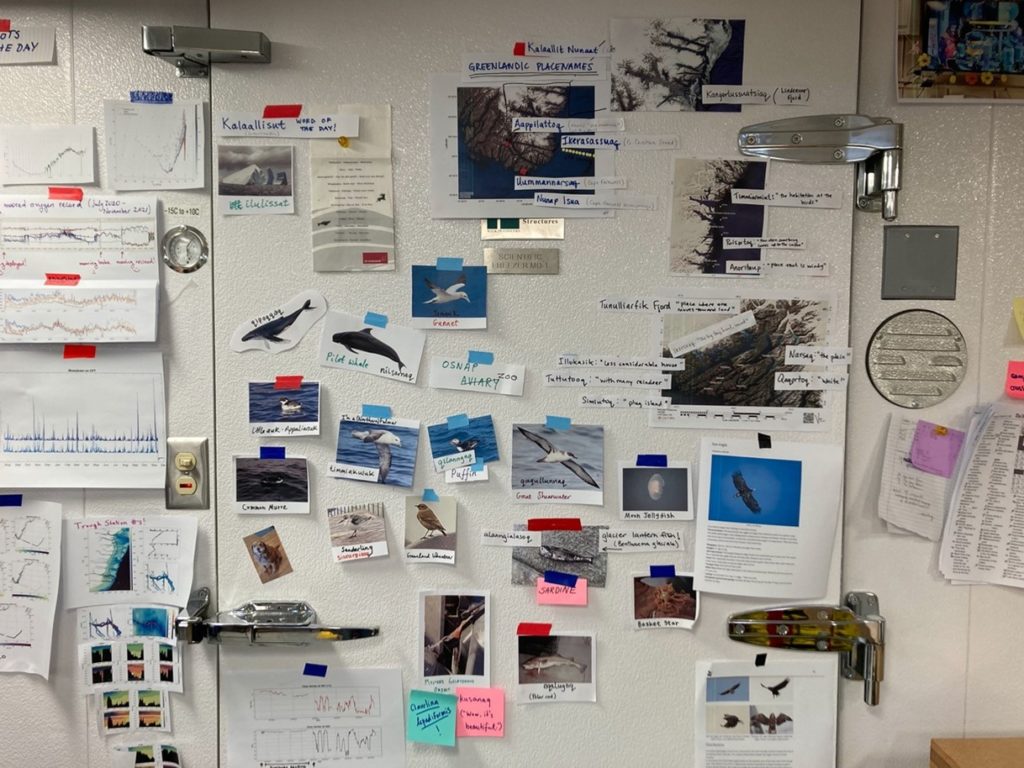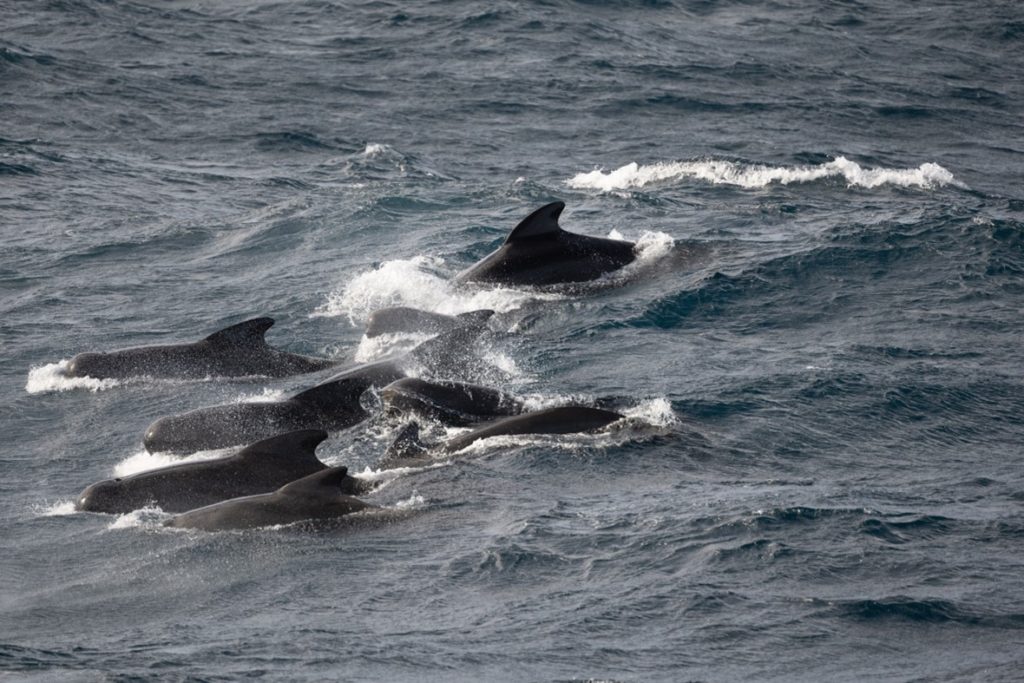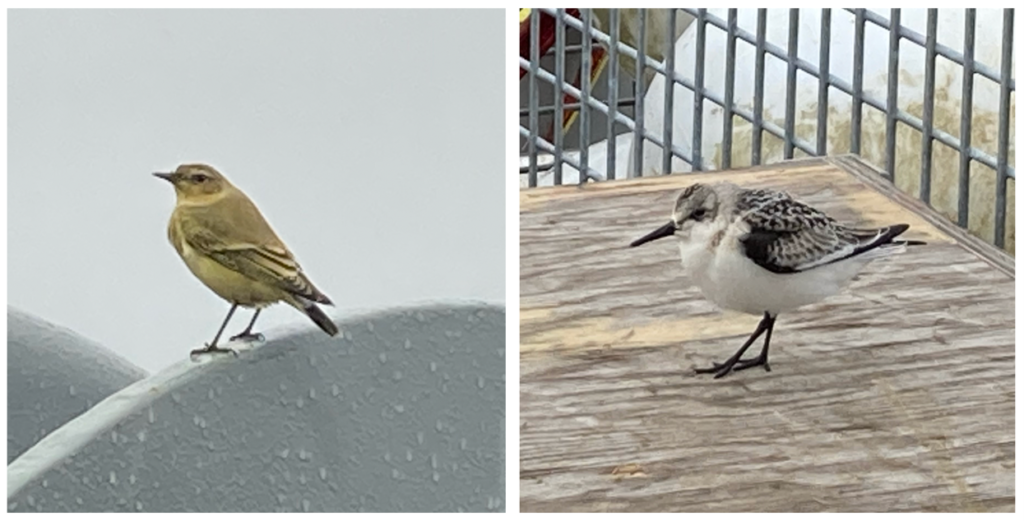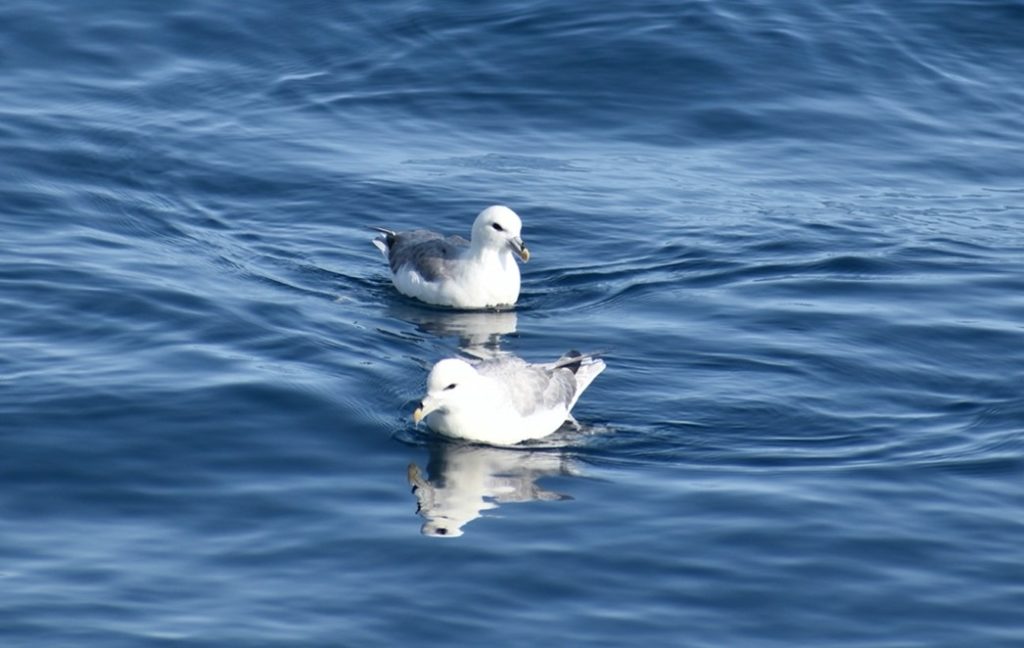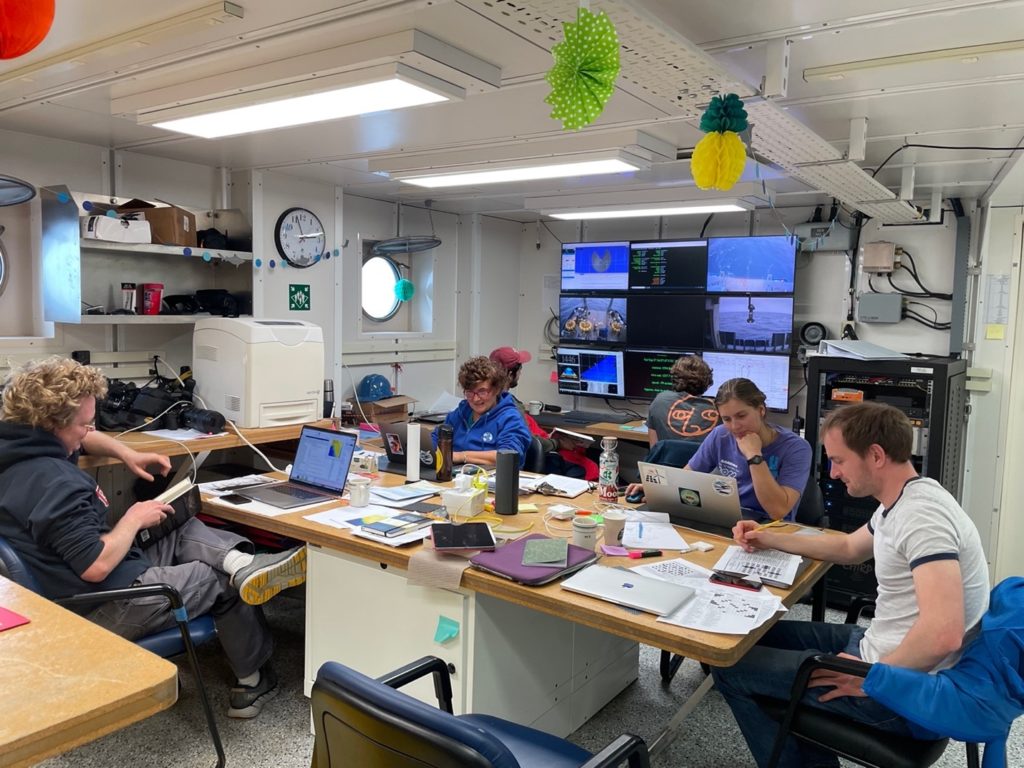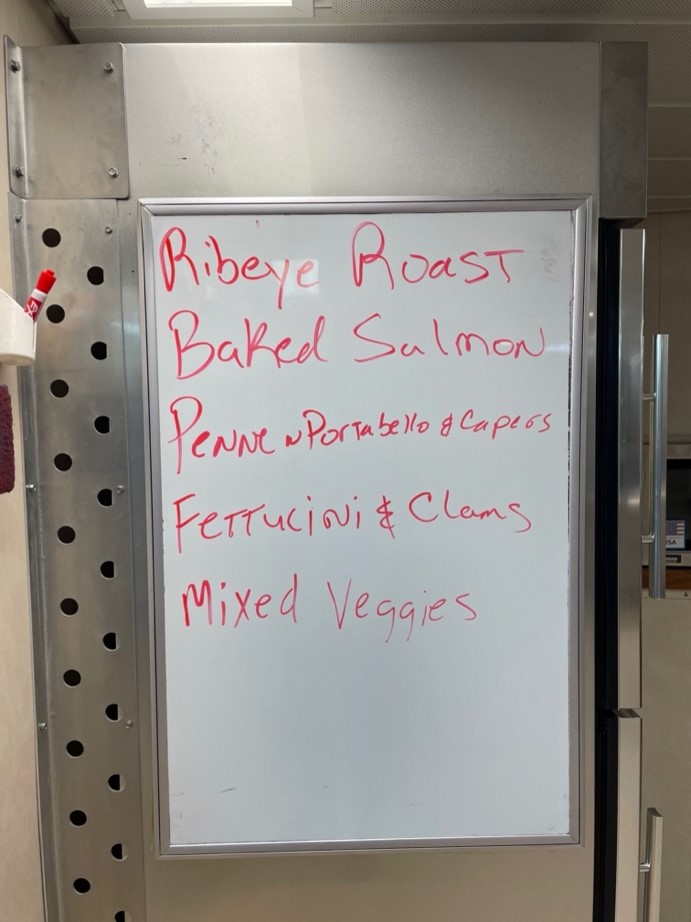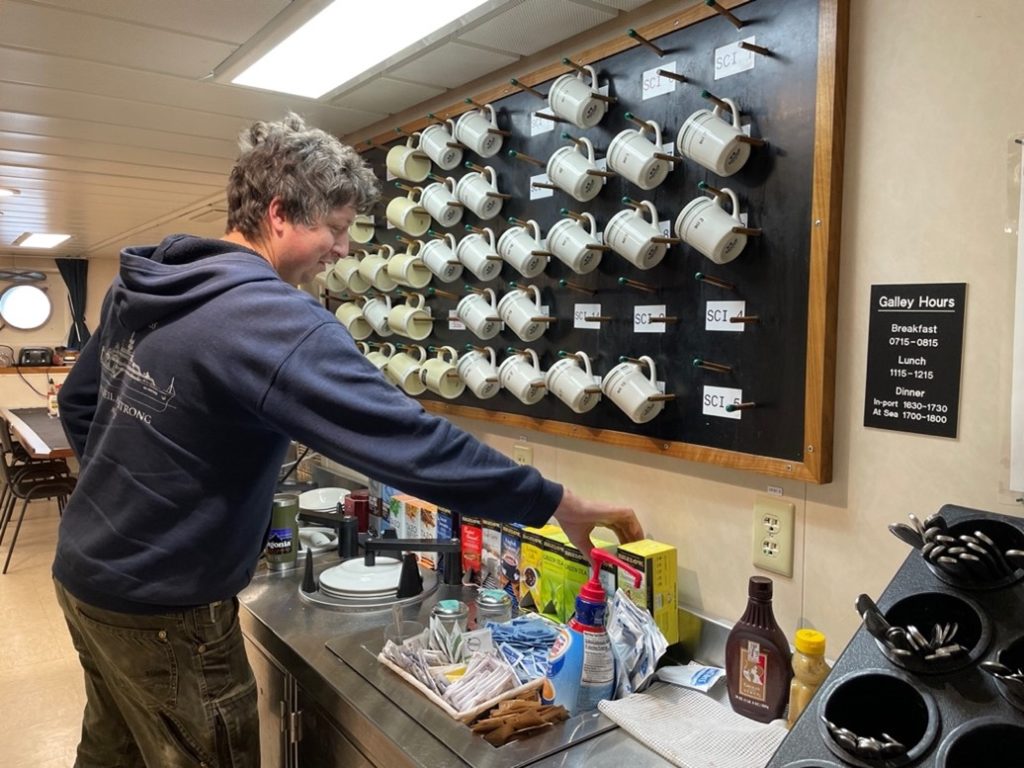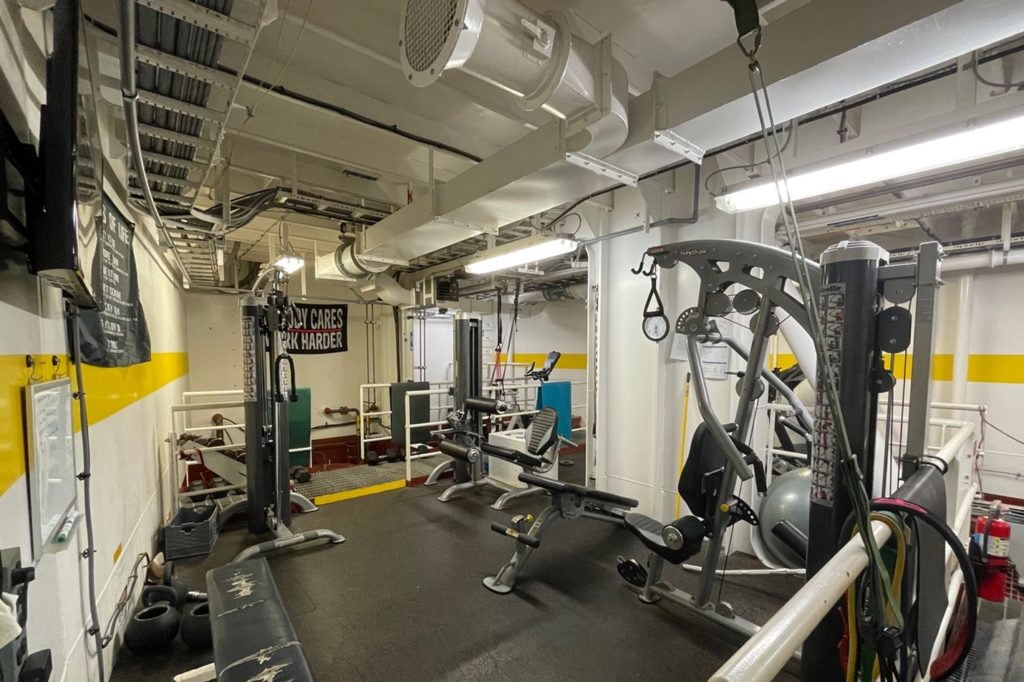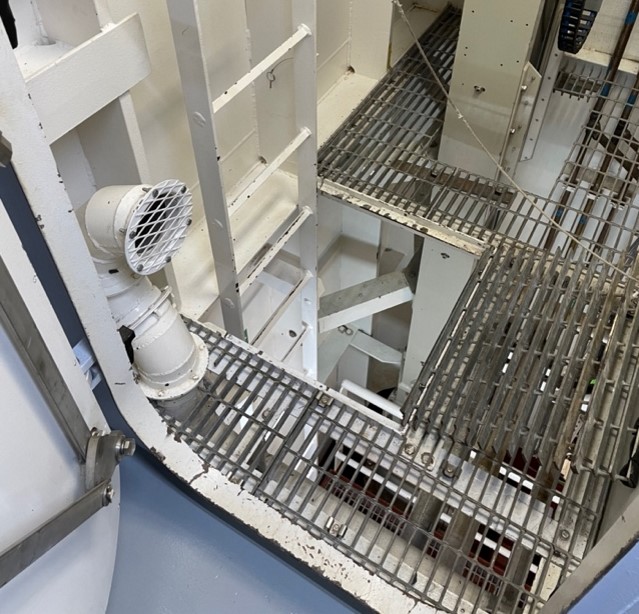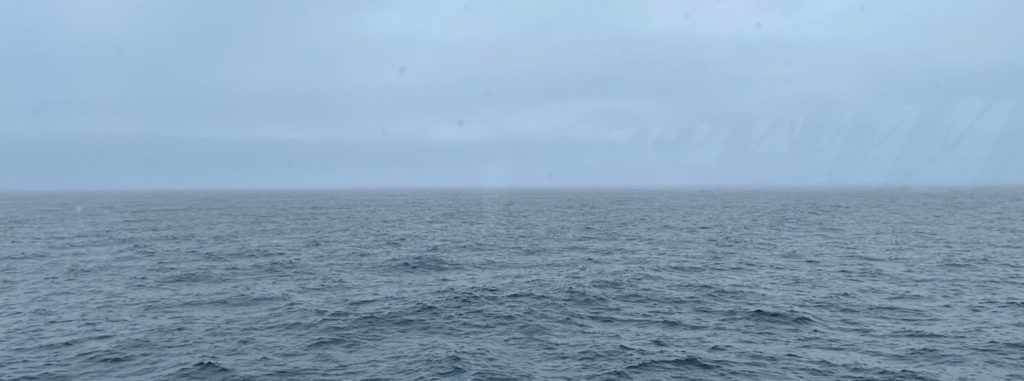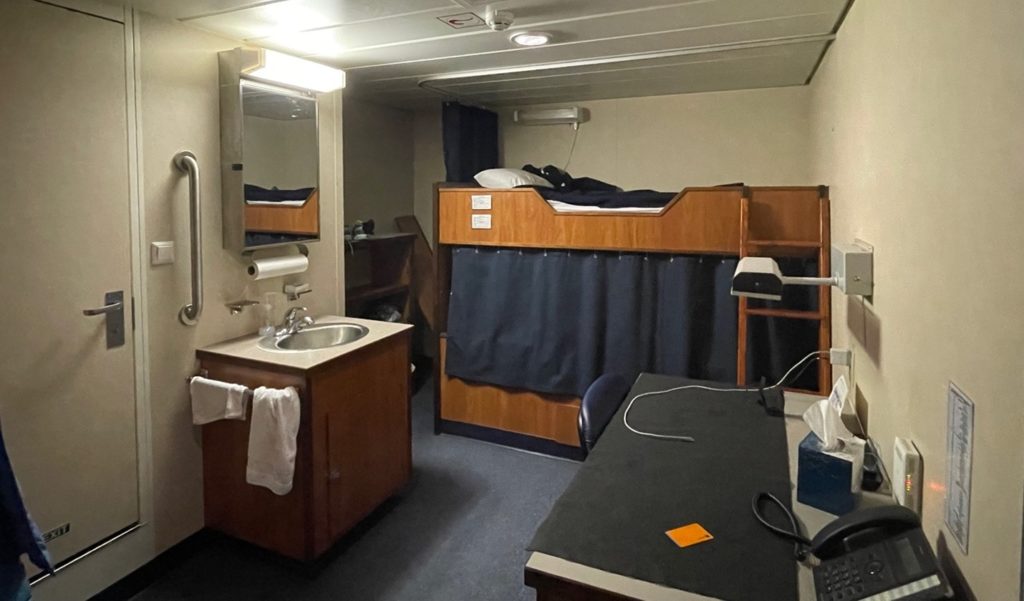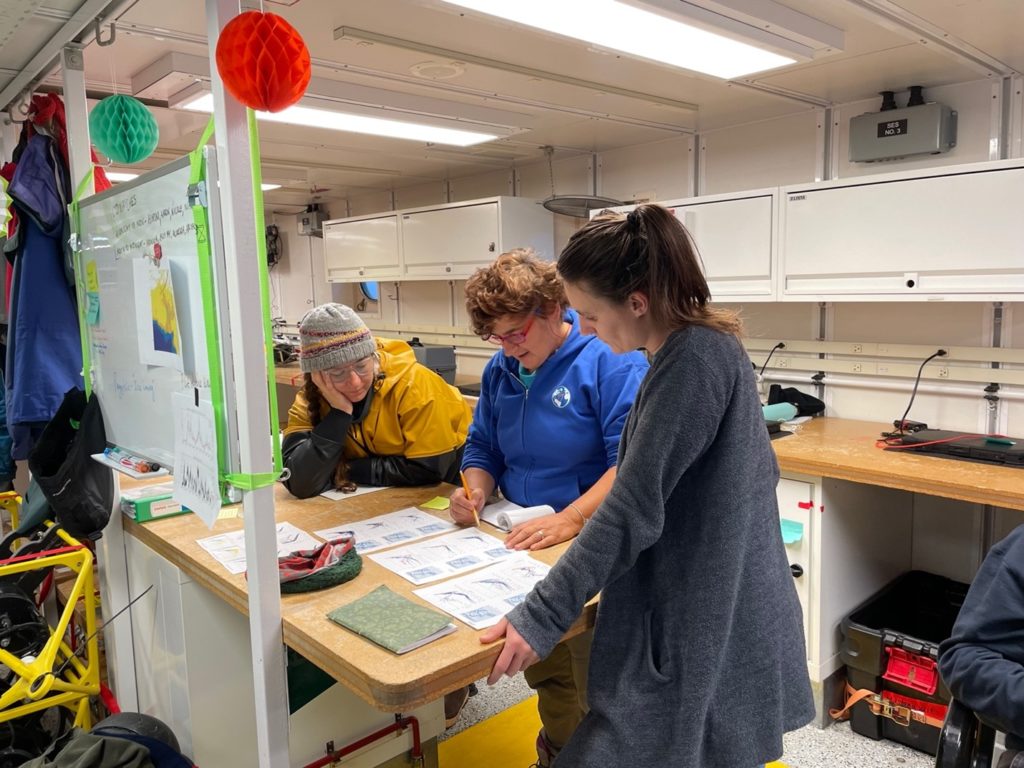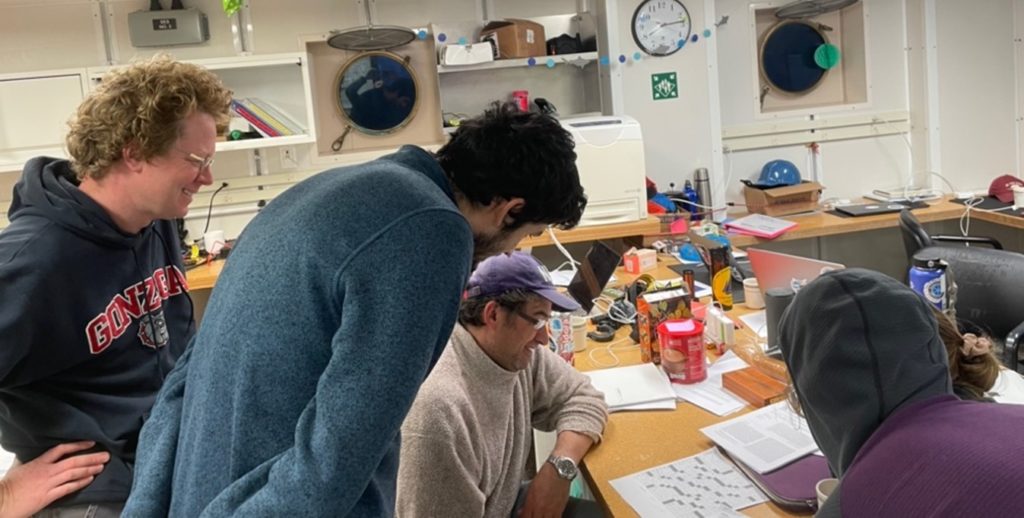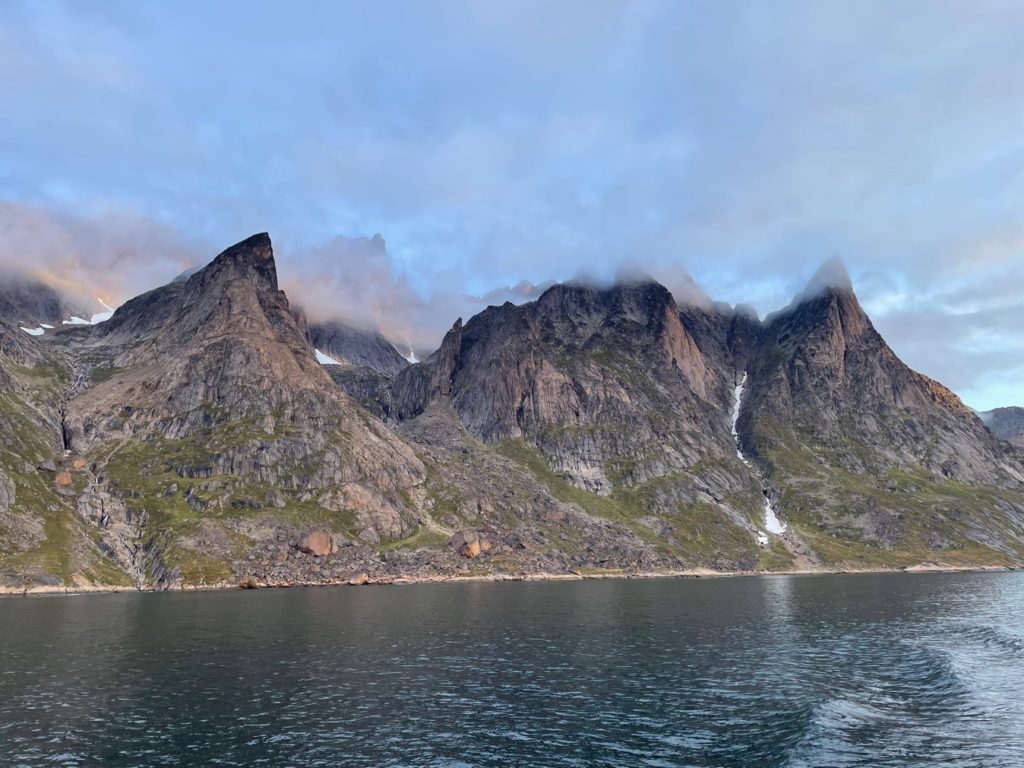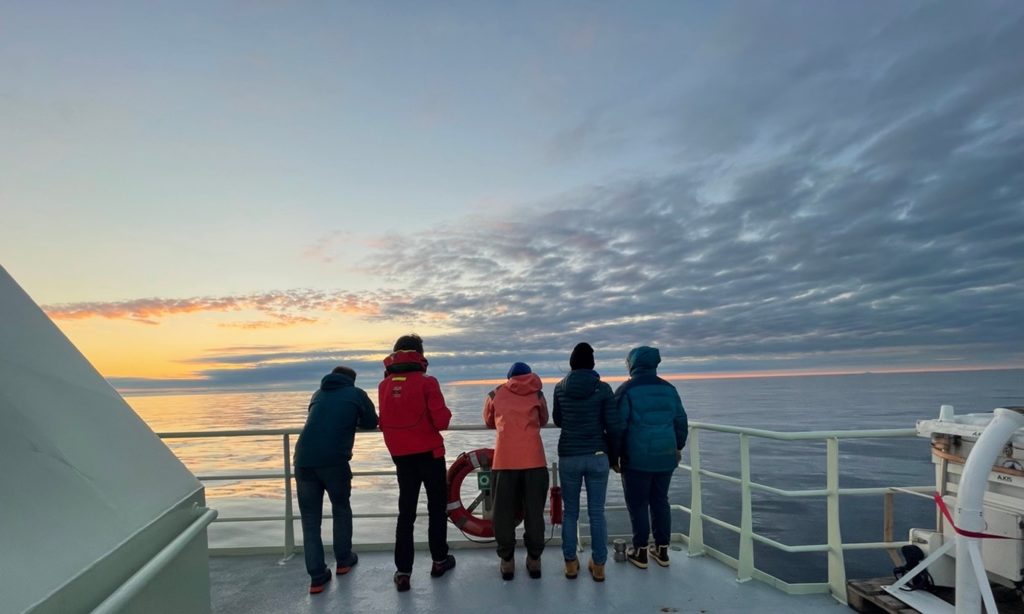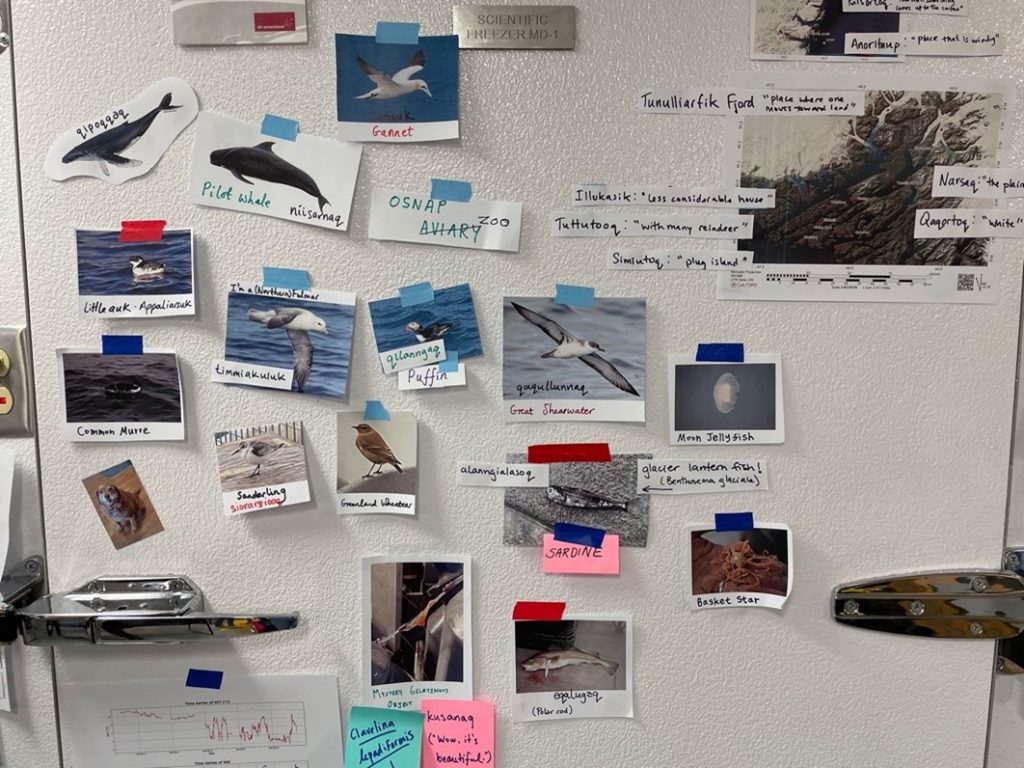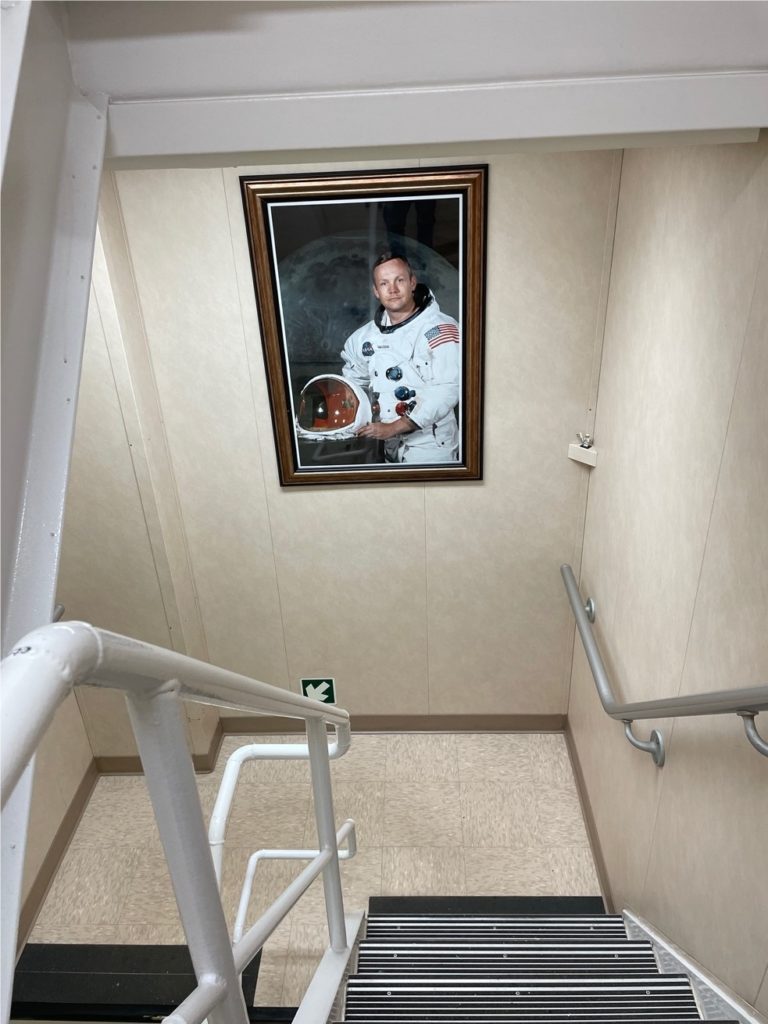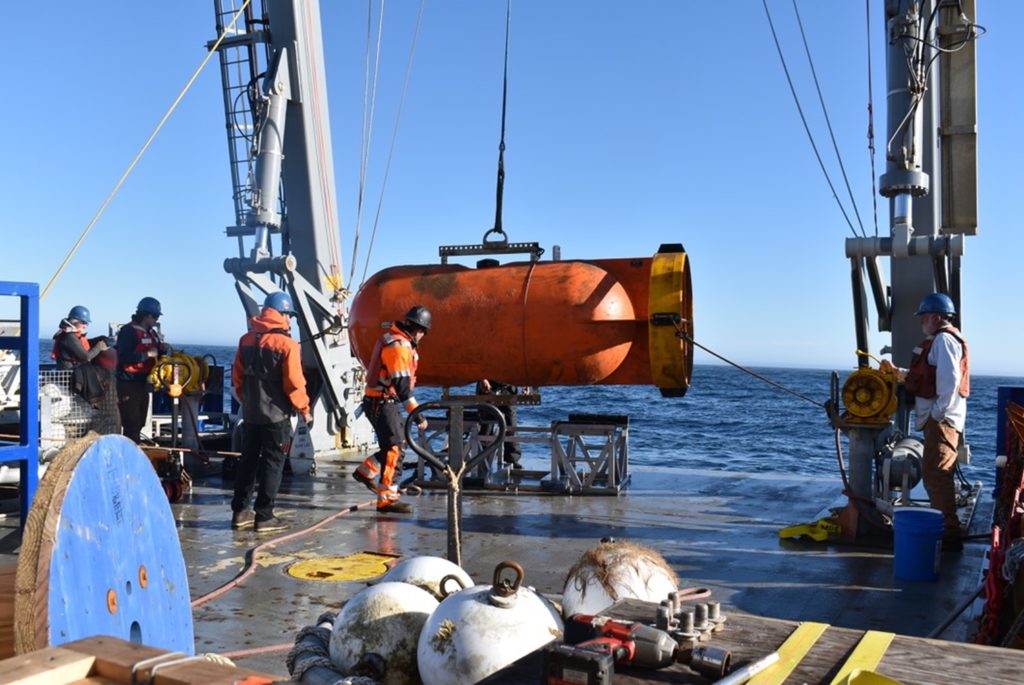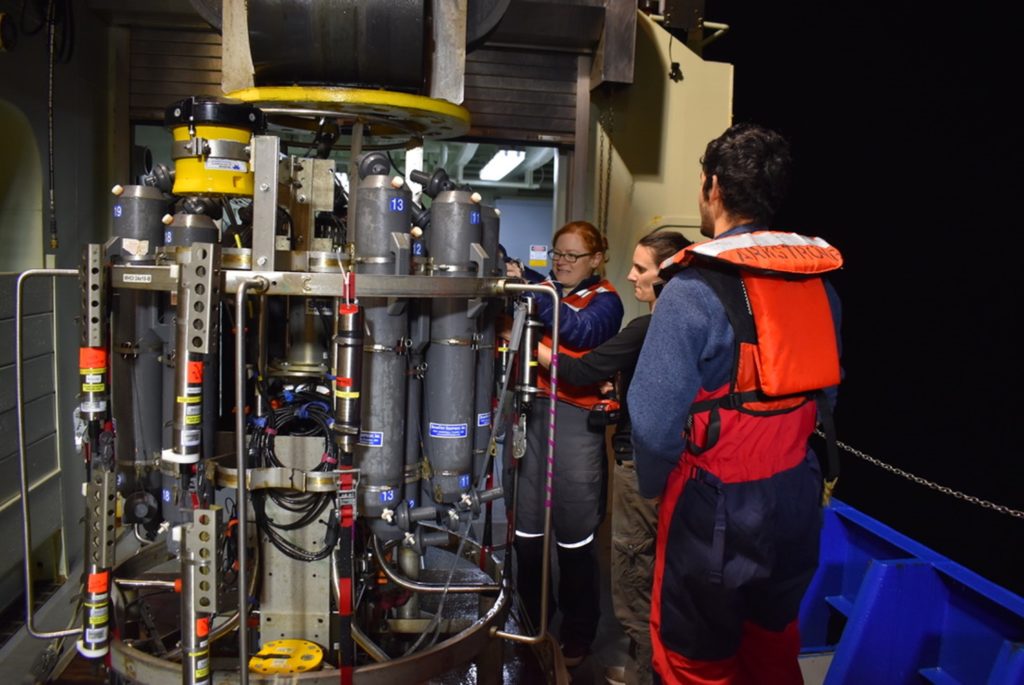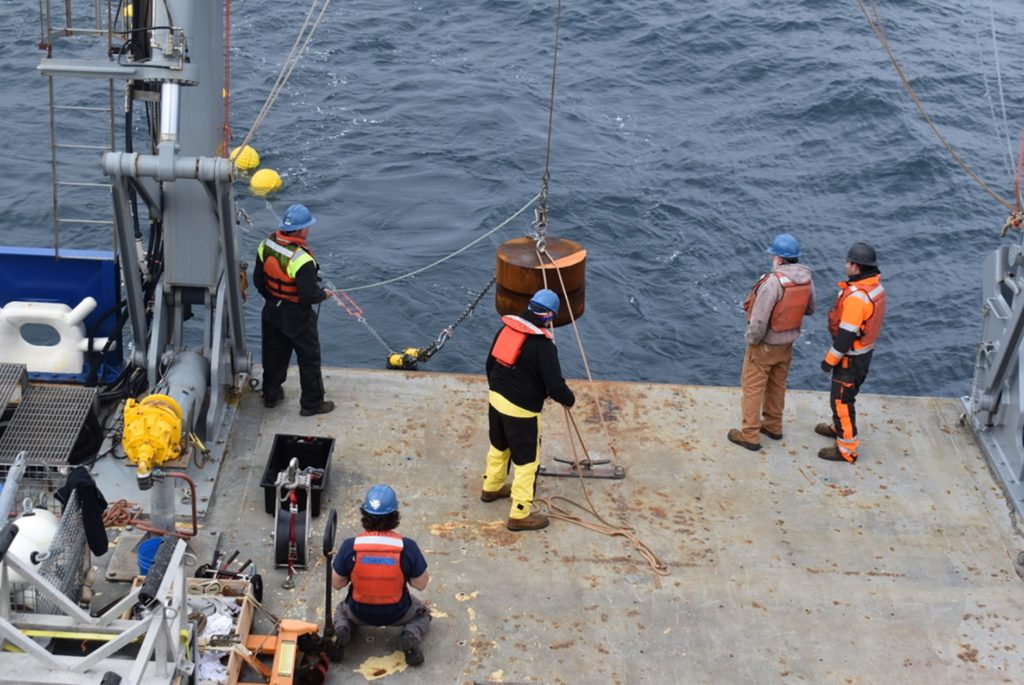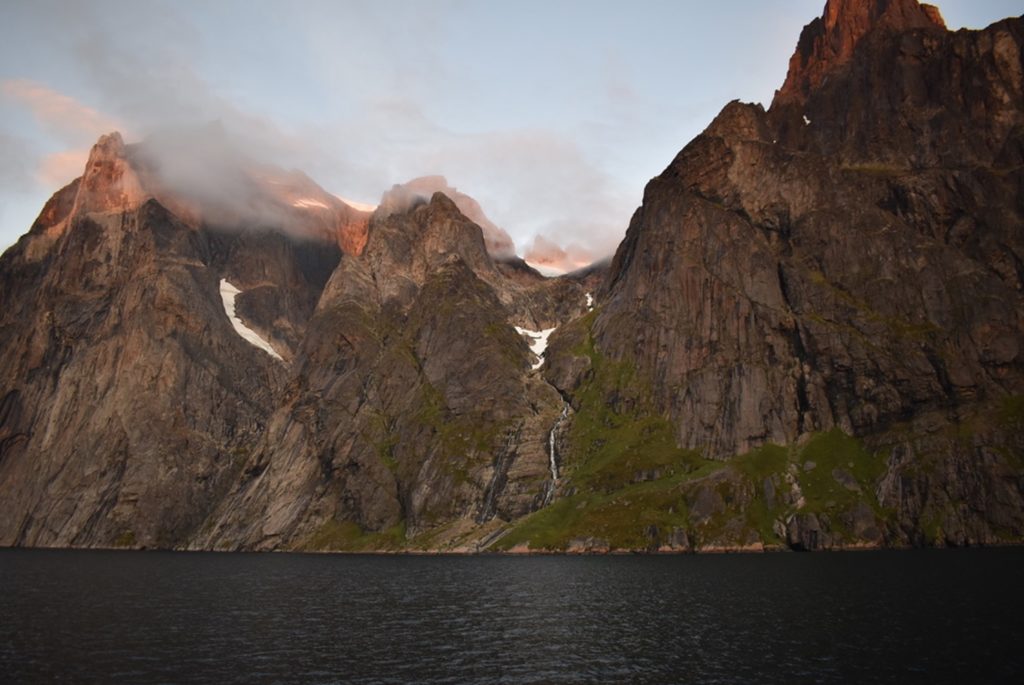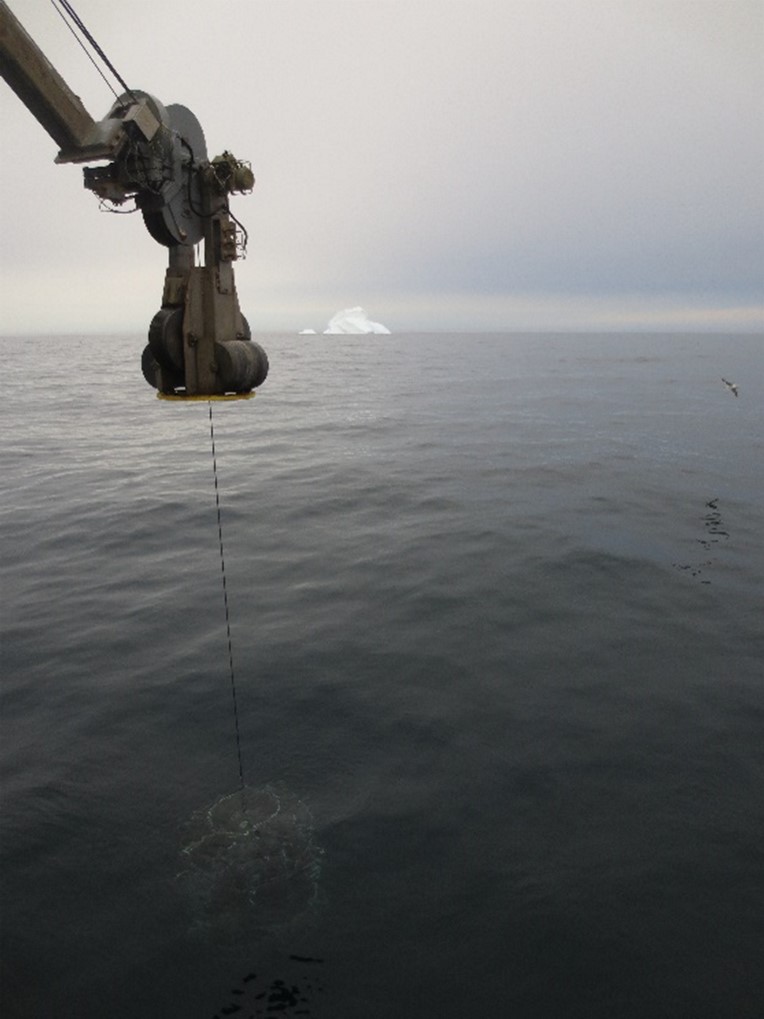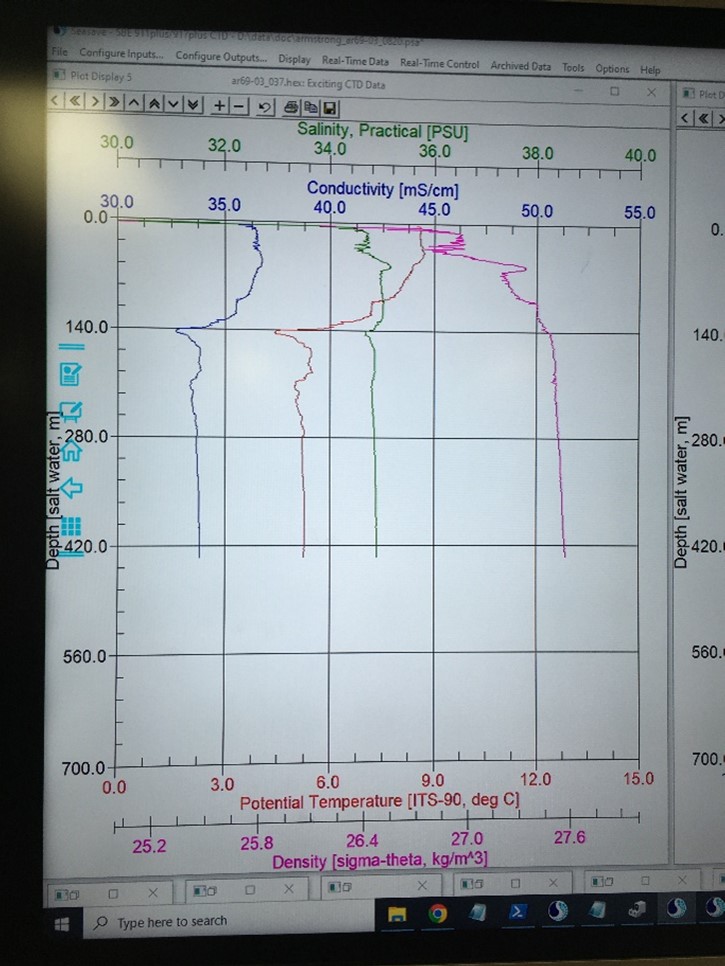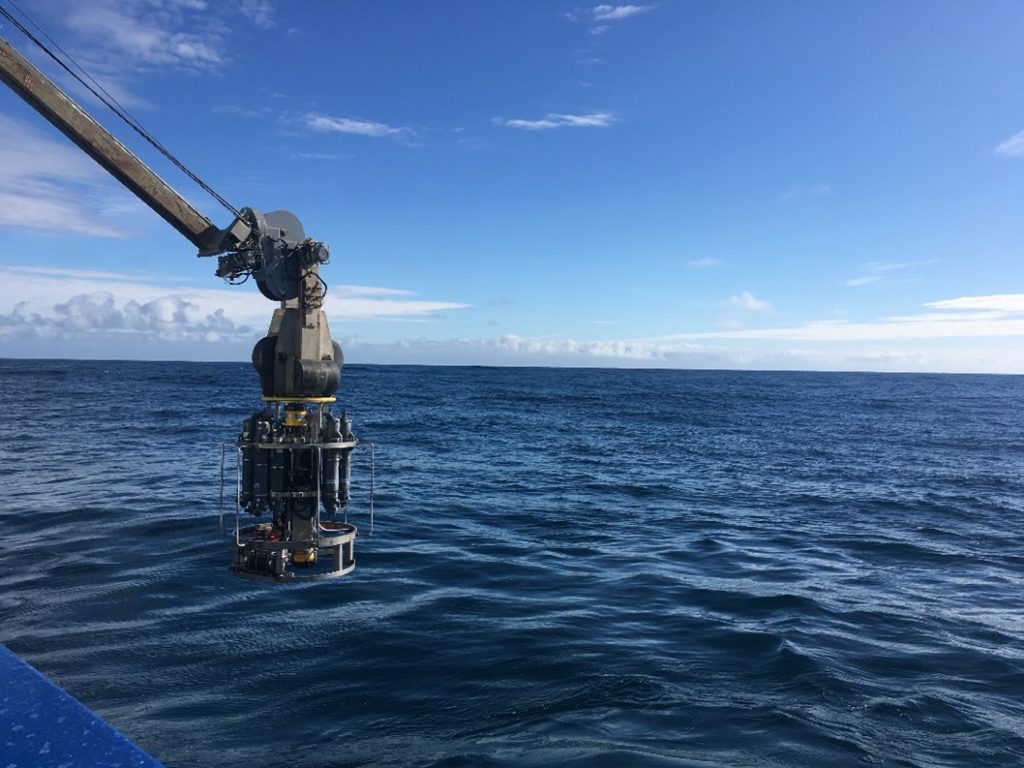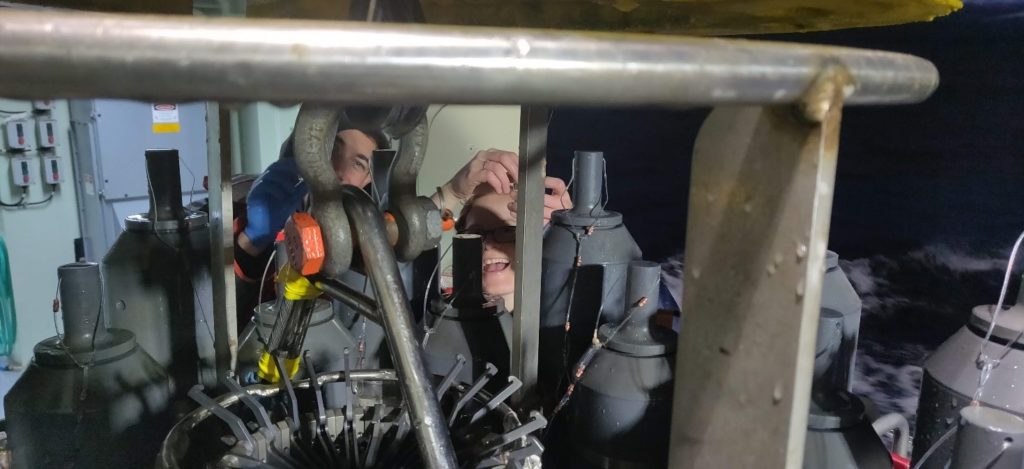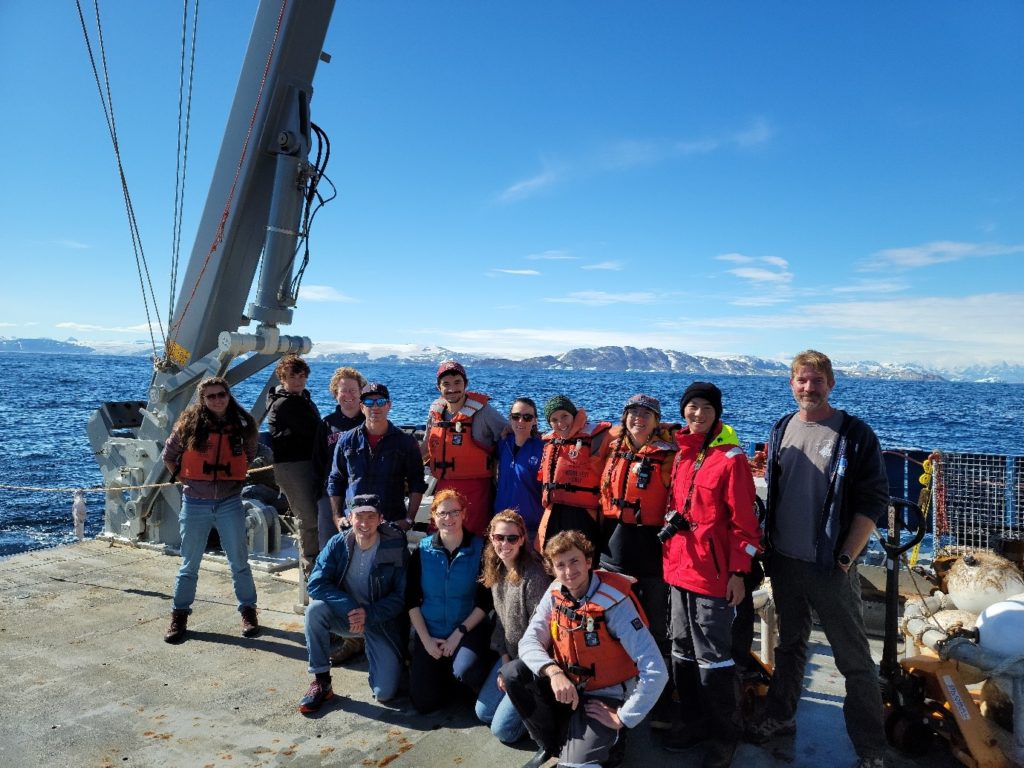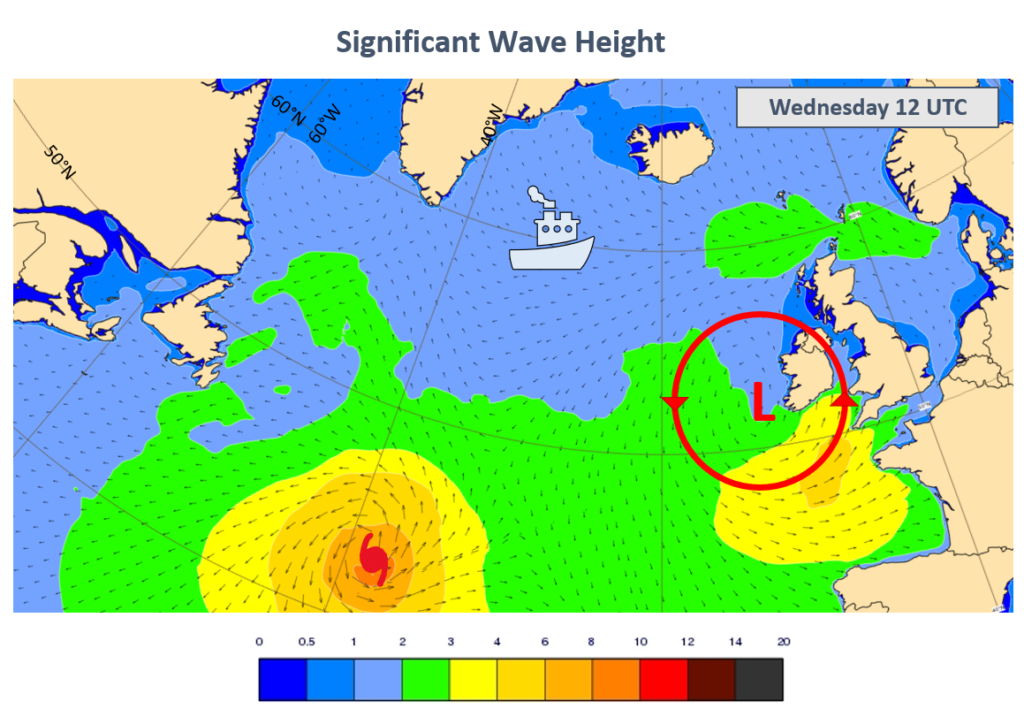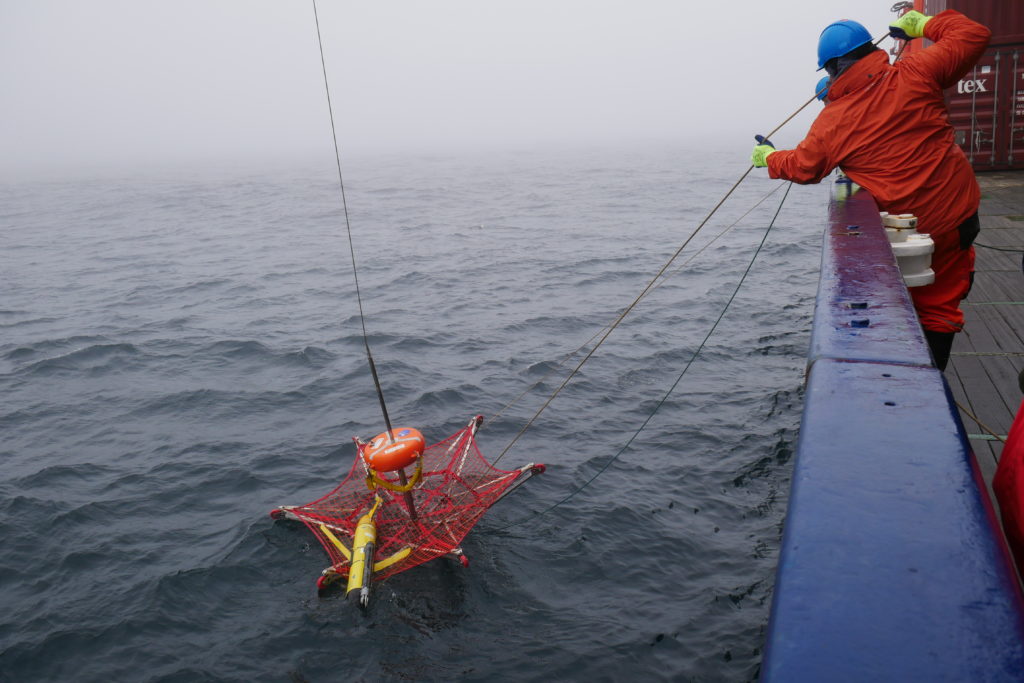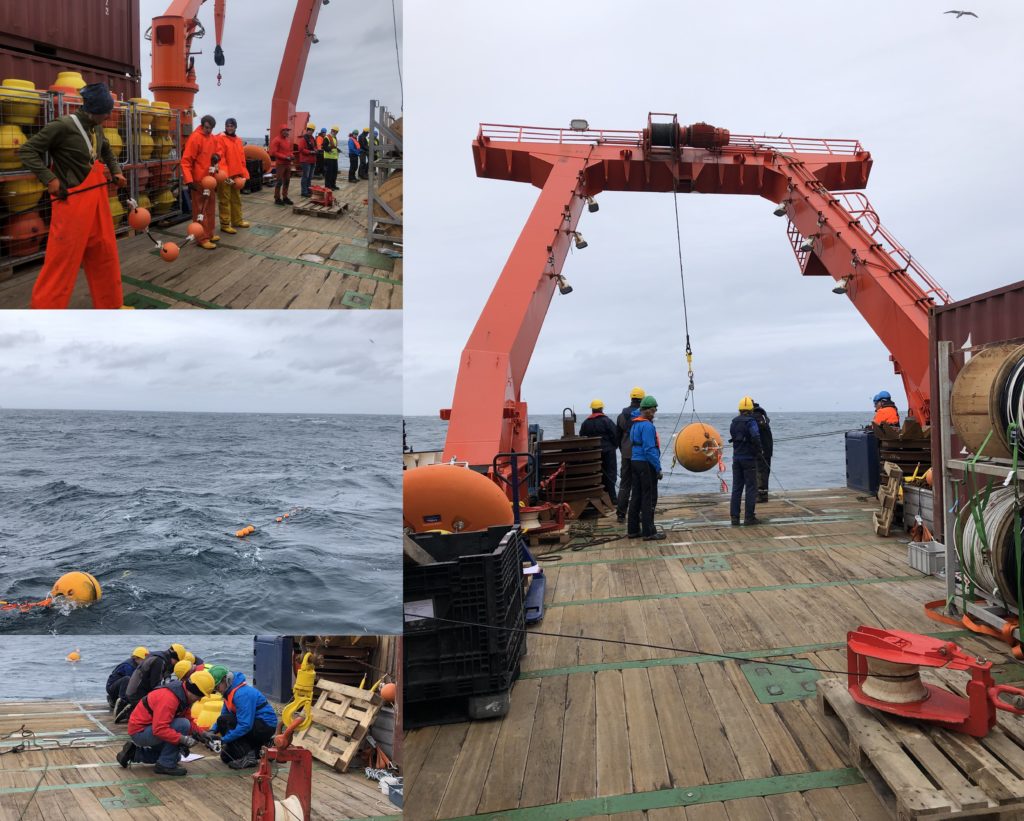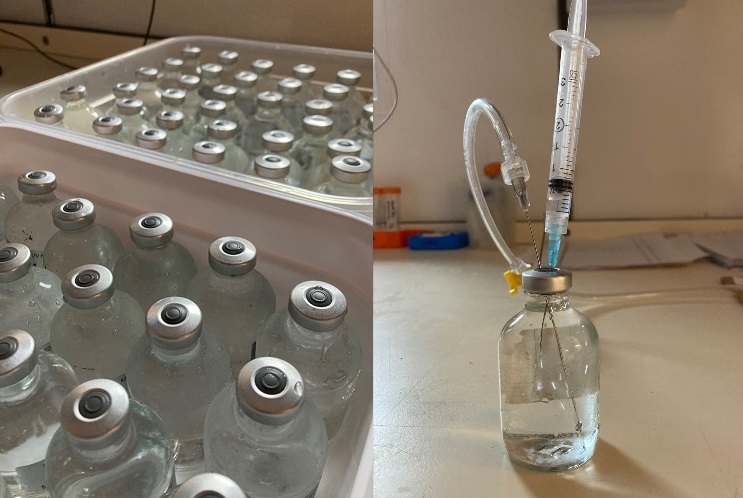By Fiamma Straneo
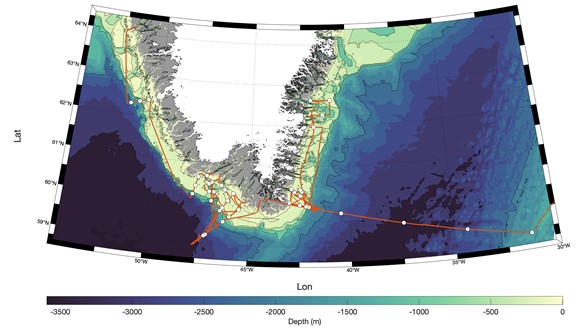
An awakening of gusty winds and capricious waves Replace images of Reykjavik Hesitant movement on the ship as we abruptly begin Steam, Stop, Sample Rollercoaster at the surface mirrors the spires of the mid-Atlantic ridge beneath us As we head across the Irminger Sea Steam, Stop, Sample A rhythm slowly unfolds Steam, Stop, Sample Waves become longer and movements less hesitant Sensors pierce through young and old waters on their way down Warm waters, suggestive of tropical climes Give way to cold, newly formed mid-depth waters and Look! The deep waters from the Iceland-Scotland Ridge Crawling at the bottom, invisible to the surface The essence of the overturning circulation Text book learning turns into experience Steam, Stop, Sample Until the end of the line Marked by Greenland’s jagged mountains Here icebergs with mesmerizing shapes drift in cold, clear waters Every now and then a glacier comes into view Turn back to pick up buoys left behind last time we were here Steam, Stop, Release Hoping they will cede to our call and drop their anchor Hoping to be the first to spot them as they pierce through the surface Waiting turns into excitement. Steam, Grapple, Hoist Help the heroic instruments back onboard Scrub them clean of temporary dwellers Before greedily listening to the stories they tell. Two years inside the overturning. Steam, Stop, Release Steam, Grapple, Hoist A rhythm slowly unfolds As the instruments pile up on deck Flurry of laptops, cables, instruments Young scientists turned overnight into crusty, able oceanographers Until, one of many low-pressure systems scurrying across the Atlantic, Stalls Over Us Roll, Tie-down, Roll Toes wedged between wall and mattress anchor us during sleep Water floods across the deck Pilot whales surf in the waves by the ship beckoning Then just as it came the storm leaves Leaving sunshine, icebergs, glaciers and northern lights Steam, Stop, Sample Deep canyons guide tropical waters towards the ice Steam, Stop, Sample Time to head back to the buoys Steam, Stop, Release Steam, Grapple, Hoist Every buoy replaced by a twin For more stories in two years. We cross to the Labrador Sea through a steep-walled shortcut Here it all repeats Steam, Stop, Sample Steam, Stop, Release Steam, Grapple, Hoist A rhythm slowly unfolds Backdrop of southwest Greenland’s gentler peaks Crane stops working. Intermission filled by acrobatic flights of dark-eyed fulmars Crane fixed. Steam, Stop, Sample Sensors piercing waters cold and warm, fresh and salty And deep down the dense waters again. Crawling at the bottom, invisible to the surface Steam, Stop, Sample Vials of precious salty waters packed in endless boxes with little numbers Some emptied into alchemic alembics The vials too tell stories. This time of origin and happenings along the way Steam, Stop, Release Steam, Grapple, Hoist Every buoy replaced by a twin To measure for two more years At night different canyons drive same swirling currents Steam, Stop, Sample In the day Steam, Grapple, Hoist At night Crane breaks. No fix this time Pause nonetheless to watch great shearwaters wing-dipping in cold water Without a crane weights are dragged on deck Until all the twins are deployed. Take a break in the icy, flat waters of a fjord before heading out into another storm Cape Desolation beckons us with its submerged rocks and mountains Whale spouts in the distance and stiff wind ahead Forty knots gusting fifty Fifty knots gusting sixty This is the North Atlantic after all Roll, Tie-down, Roll Steam, Stop, Sample White waves bounce us in the dark. Until time’s up And the lights of Nuuk’s bustling harbor appear Hesitant movement on land after 37 days at sea Ocean data, recently declared world heritage, Tucked deep in our pockets in a small hard-drive A giant effort by a ship, 17 scientists and 22 crew A small step forward for overturning science To be continued to provide answers twin buoy after twin buoy vial after vial one crusty oceanographer after another.
